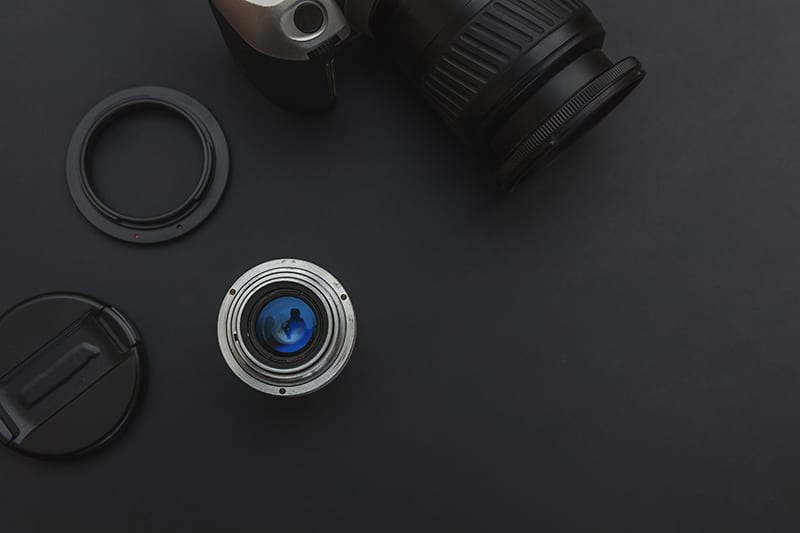Difference between Crop Sensor and Full Frame Cameras
If you are interested in photography or want to learn about it, then you must have heard or read people debating about the cameras. Professional photographers are already aware of the technology and various types of cameras or equipment involved. Hearing all that jargon must be overwhelming for a newcomer or even a professional. Don’t worry. We want to simplify photography for everyone. In today’s blog, we shall discuss the differences between crop sensors and full-frame cameras.
Originally film cameras shot on a 35mm film reel. When DSLRs were invented, manufacturers made large 35mm sensors so that photographers would have no trouble transitioning from film. These sensors are called full-frame sensors. It has been standard in film gauge since 1909. The 35mm film reel was balanced in cost and image quality which made it so popular. A crop sensor is basically any sensor smaller than a full-frame sensor or 35mm. Common crop sensors include APS-C and Micro 4/3 systems. The physical size is just one of the many differences between the crop sensors and full-frame.
The name ‘crop sensors’ suggests another difference between these two. The smaller sensor’s view field is a crop of the full frame. The field of view is one of the most obvious and visible differences between them. Crop sensors are excellent for tight shots or smaller views when required. A full frame DSLR like Nikon D800 won’t be able to give you a compact, tight view like the D7100 which is a crop-sensor DSLR.
The extent of the crop varies according to the camera and the manufacturer. It is known as ‘crop factor.’ Nikon cameras usually have a 1.5x crop. Canon 1D users have a 1.3x crop while their consumer Canon cameras have a 1.6x crop.
The amount of difference in field view or focal length with a crop sensor is measured by its multiplier. Focal length measurements on lenses are based on the 35mm camera. For photographers using the Crop frame, the sensor is cropping the edges out of the frame and increasing the focal length.

A full-frame sensor and camera can provide a broader range and high-quality low light images than a crop sensor. The wider angle in full-frame cameras is ideal for different types of photography such as architecture or nature. The tilt/shift lenses are much easier to use and effective in full-frame cameras. A full-frame sensor and camera will have a shallower depth of field. This enables photographers to get better aesthetics and angles efficiently. The larger the sensor, the longer the focal length of the lens has to be to capture the picture powerfully. Full-frame cameras cost more due to their quality and durability. Full-frame sensors and cameras are preferred by professionals as they are sharp and have maximum apertures. Nikon full-frame lenses are called FX and Canon full-frame lenses are called EF.
Crop sensors are cheaper and affordable. They don’t offer the same picture quality as a full-frame DSLR. However, the tight field of view is appropriate for certain photography types such as sports, wildlife, and photojournalism. Frame filling shots of animals or birds are beautifully captured using a crop sensor camera. Those with full-frame cameras have to struggle or use a really long lens to capture wildlife. Crop sensor cameras are more compact and portable than DSLRs which can get bulky. Lenses made for crop sensors don’t work for full-frame cameras. The crop sensor lenses lack sharpness and quality. You may have to upgrade to full-frame sensors eventually. High-end crop sensor cameras are available at the fraction of DSLRs and give you equally great picture quality.

There is no right or wrong choice here. Between full-frame and crop sensors, the answer depends upon your use, requirement, budget, and photography type. Professional photographers carry different lenses for different purposes. Or they purchase both cameras and use whichever suits their purpose. For a budding photographer, this may seem like a stretch so you can invest in a crop-sensor frame. However, you will need a full-frame lens in the future so make that decision carefully. You can start off with a basic full-frame DSLR which will probably meet all your expectations.
More than the money, the choice lies between technique and quality. You will need some experience before understanding what works best for you. What we recommend is if you are starting out, test your style with a crop sensor camera initially. It gets the job done and is a great way to test the waters. Once you get some experience and find your groove, you can make a shift or stick to the crop sensor if that works for you. Photography equipment needs to be upgraded regularly so it is vital that you learn to be cost-effective. Both styles have their advantages and benefits, you just need to examine what works best for you at an affordable cost.
